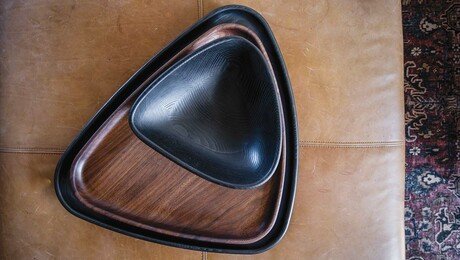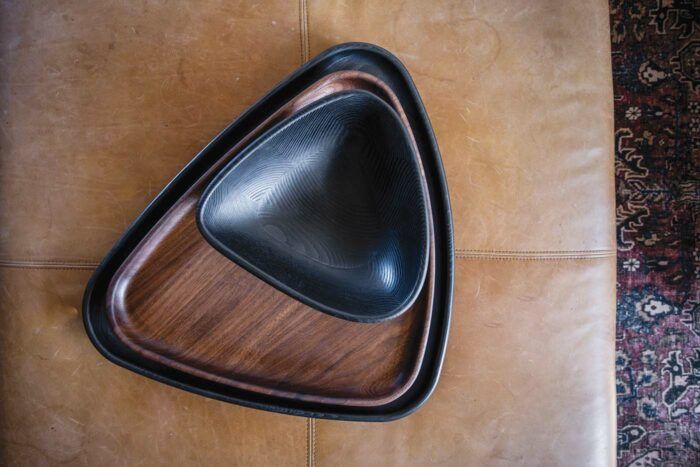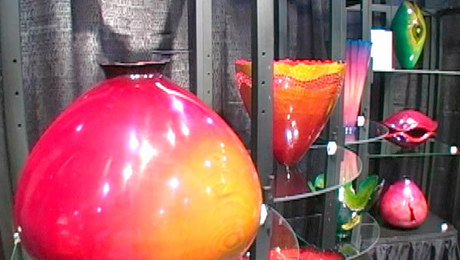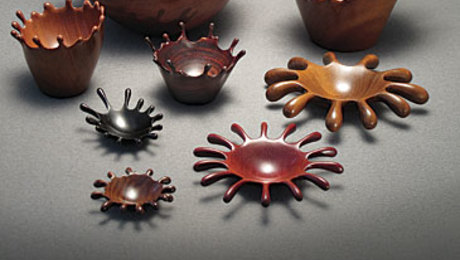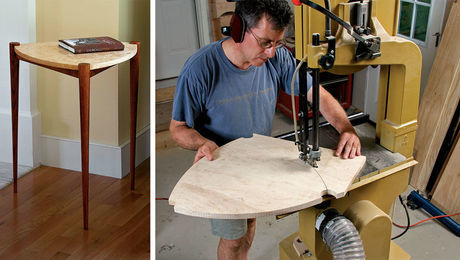 When Justin Nelson started Fernweh Woodworking in Bend, Ore., in 2014, he was coming off four years in the Marine Corps and then a season on a Forest Service Hotshot crew fighting wildfires. Making tobacco pipes was the only woodworking he had done. “I didn’t know what the business would look like,” he says, “but I liked the idea of independence after government jobs.”
When Justin Nelson started Fernweh Woodworking in Bend, Ore., in 2014, he was coming off four years in the Marine Corps and then a season on a Forest Service Hotshot crew fighting wildfires. Making tobacco pipes was the only woodworking he had done. “I didn’t know what the business would look like,” he says, “but I liked the idea of independence after government jobs.”
He got a quick table-saw lesson from his brother-in law and started out, as he says, “making knick-knacks, learning on YouTube, and blundering through, working 70 hours a week.” A couple of years in, he was introduced to Sam Maloof’s work. “It boggled my mind,” he says. And it convinced him to turn his business toward furniture. He came to love designing and building furniture.
These days, as he works with four others in a 2,000-sq.-ft. shop, furniture is his primary product. Chairs are a particular fascination. Drawn to the work of master 20th-century chairmakers Hans Wegner and Finn Juhl, Nelson toured shops in Denmark where Wegner’s furniture is still made. He was struck by the craftsmanship and teamwork there and the blending of manual and mechanized approaches to furniture making.
Nelson is keen to foster a similar ethos at Fernweh. “It’s a team of woodworkers,” he says, “and I’m somewhere in the middle.” Asked about the company name, he explains, “Fernweh is a German word that means roughly, ‘to be homesick for somewhere you’ve never been.’ To me, it’s the feeling I get when we’re working on a new design.”
 |
 |
Triangular diversification.
When Covid ended and sales ebbed, Nelson searched for ways to diversify. His nesting coffee tables and triangular bowls and trays, all products of that moment, were meant to provide an accessible entry point for customers.
Production piece.
Nelson’s tripod table, the first piece of furniture he designed with production in mind, was, he says, “heavily inspired by Sam Maloof’s joinery.” When the legs are turned to a taper, a chunk of the blank is left unturned where the joint occurs. After they are joined with slip tenons, the junction is shaped with a grinder and rasps. The tabletop, originally routed with a circle jig, now gets relieved by CNC.
Sign up for eletters today and get the latest techniques and how-to from Fine Woodworking, plus special offers.
Download FREE PDF
when you enter your email address below.
